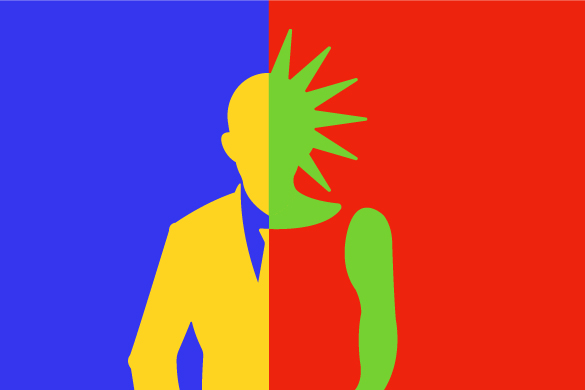Friend or boss? Types of Corporate Culture
Prioritization, communication methods, conflict resolution methods — these and hundreds of other parameters make up a company's culture. In other words, the internal standards of behavior that have developed within the company.
One of the key components of corporate culture can be distinguished:
- Formal and de facto values and principles.
- Distribution of roles in the team, the concepts of leadership and career development.
- Behavior model in the external business environment and success indicators.
Уже этих трёх признаков достаточно, чтобы точно определить, к какой из 4-х групп относится корпоративная культура. Об этом и расскажем далее.
Hierarchical type

The basis of this type of culture is the strictness of rules and the formalization of processes. The core values of this format are stability, thoroughness and rationality. It is common to regulate everything and everyone. These are usually narrowly focused companies.
The approach to employees is impersonal:
- Recruitment and evaluation are based on tests and scores.
- Decision-making powers are clearly distributed at each level.
- Instructions and rules always take precedence over people.
In hierarchical cultures, leaders are those who are good at organizing and coordinating. They must maintain the efficiency and predictability of the team over time.
In such a culture, all business processes are geared towards profitability, reliability and meeting deadlines. The measure of success is smooth schedules in monthly reports and reduced costs.
A fairly common type of organization — this is how government agencies, many network companies and global manufacturing brands are organized.
Market type

As the name suggests, the focus is on the bottom line. The key values in such a culture will be productivity, commitment and competitive advantage. The basic principle is to achieve primacy at all costs.
Departmental relationships are based on rivalry. Management is tough and demanding. Nevertheless, there is a common team spirit — everyone is focused on success (both personal and corporate) and reputation.
Efficiency is measured in terms of “captured” market share and “invasion” of new markets, according to the best price offers. Competitiveness is the main guideline.
Much attention is paid to interaction with external entities (customers, suppliers, public authorities), so it is important to keep concentrated to beat the competition. The main tasks are to increase profitability and strengthen positions in their business niches.
Aggressive strategies are favored. Even results are unacceptable. The vector of the market system is forward and upward — towards constant development and leadership.
Clan type

Unity, mutual understanding, personalization — this is the basis of the Clan corporate culture. There is a friendly atmosphere and mutual support in such an organization. Employees' activities are not strictly regulated, instructions are minimal, there is no clear division of leadership roles, and there is no internal competition.
Everything follows the principle of “culture is us”:
- Employees are involved in the business and feel internally responsible.
- Company has obligations towards it’s employees.
- Work is based on a team system.
The best analogy for this type is an extended family. Key people function as mentors (and sometimes parents). Their role is to create a comfortable microclimate for efficient work. The sustainability of the business is underpinned by tradition and loyalty.
The brigades have quite extensive powers, they can hire and fire members, create internal development and motivation programs. They also receive a share of the profits.
The emphasis is on maintaining a psychological climate conducive to unlocking potential. The success of the company correlates with the success of everyone. In this way, they create a favorable environment for long-term, mutually beneficial cooperation - both with employees and with consumers.
Adhocratic type

A progressive culture based on a balance of creativity and entrepreneurship, which adapts quickly to changes in external factors. It has evolved in the transition from the industrialization to the information age, against a background of increasingly rapid correction of market conditions. Key values are innovation, flexibility, and willingness to take risks.
Dedication, initiative, and bold ideas are expected. The hierarchy is not fixed, management moves from one to another. Leaders are characterized by innovation and determination. Management should foster creativity and encourage initiative. Efforts are focused on the dynamic growth of entrepreneurship.
n such an organization, teams are formed for a specific project or task and reorganized into new teams after completion. It is therefore especially important to be ready for change and new challenges.
The adhocratic system is united by a commitment to innovation and experimentation and a desire to be at the forefront of progress. Long-term planning is aimed at expansion, development of new resources and market leadership. Success is identified with the creation and sale of new unique products/services.
Adhocracy is typical of companies in high-tech industries, the IT sector, the film industry, and consulting.




